Home » Kythira Information » Geography ~ Nature » Kythira Flora » Kythira Trees
Kythira Trees
Trees have always held an important place in human culture, and by extension in island environments such as Kythira, which while often surviving through the centuries, combining their existence with important aspects of the local anthropogeography. It is enough to reflect on the role of the olive tree over time in the development of local society, to understand the importance of their existence. Even to this day, we meet centuries-old trees, witnesses of important events, narrators of myths and traditions of the island, as well as bearers of knowledge concerning the nature of the island.
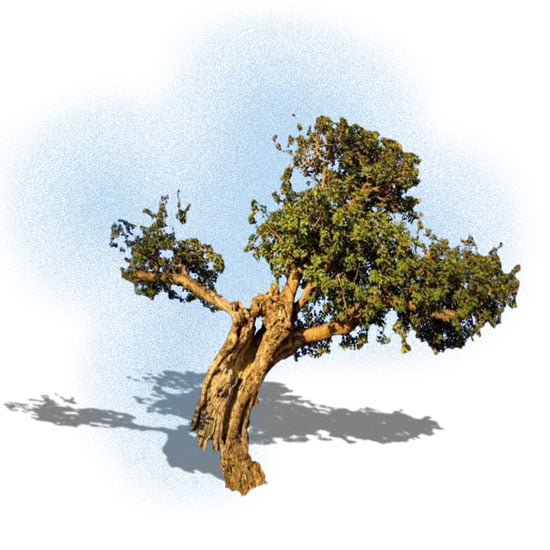
Scallops
The carob tree is a long-lived, polygamous, solitary or dioecious tree, native to the Mediterranean. It has bark brownish, thin, crown dense, usually globose, pinnate leaves with 4 – 10 leaflets entire, leathery, deep green and shiny above, pale green below, flowers with heavy smell, without petals, small, in axillary or lateral reddish racemes, usually dicotyledonous, with a small, greenish, five-lobed calyx, five stamens, long in the male flowers, short and, as a rule, barren in the female or hermaphrodite ones.
It can reach a height of 13 meters, it is found on the banks of rivers and coastal areas of the Mediterranean and it is also known by the name xylokeratia.
Carob is a forest, agricultural, industrial and ornamental species. Its wood provides high-quality charcoal, its heartwood is used in furniture, wood carving, turning and barrel making, while its bark and leaves are used in tanning and dyeing. Carobs are used as animal feed and in the preparation of alcoholic beverages.

Amygdalia
It is a deciduous tree with a height of 4 to 12 meters, a trunk with a diameter of up to 30 centimeters and elliptical, lanceolate and toothed leaves. The flowers are white or pink, develop before the leaves and are solitary or in pairs. The calyx and corolla are pentamerous, the stamens 15-30 and the ovary mesophytic.
The untamed almond appears in excavations in Greece from 8,000 BC. to 3,000 BC where it is domesticated. When the Egyptian king Tutankhamun died around 1325 BC. almonds were one of the foods placed in his famous tomb to nourish him in his afterlife. To the Greeks and Persians it is clearly mentioned as edible from the 6th BC. century. From Greece it spread to Italy during the 2nd BC. century the Latin name of the almond was nux Graecum i.e. Greek walnut.
The almond fruit is first collected from the tree with the appropriate shaking by specialized machines, then dried in the sun usually for ten days, then peeled, and taken to the breakers for shelling.
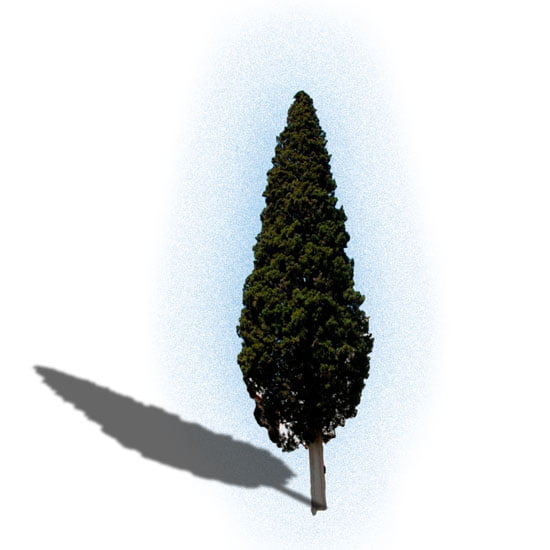
Cypress
They are trees that reach a height of 30 meters and have the shape of an obelisk. There are few shrub species that are native to wild rocky areas with spreading branches that do not exceed 7 meters in height.
It is a polymorphic tree and exists in many variations. The most important are two: the pyramidal variant, in which its branches are upright and is also called male cypress, and the horizontal-branched variant, with horizontally spreading branches and a wide rich crown, which is the well-known female cypress.
The common cypress has been known since ancient times. According to the myth, it owes its name to Kyparisso from Kos, who was transformed by the god Apollo into a tree so that he would remain immortal, along with his grief after the death of his beloved deer. So according to this view it was left as a mourning tree and planted in cemeteries.

Fig
It is a woody tree very common in Asia, the Middle East and the Mediterranean countries. Its cultivation was also introduced to America in the 18th-19th century. It is the sikei or fig tree of the ancients. It thrives in areas with a warm and cool climate and at altitudes up to 1700m. Its fruits are eaten fresh or dry.
The tree has been known since prehistoric times. Fossils of fig leaves and fruits from the Pleistocene era of the Quaternary Period have been found in the Paris area. This certifies that the plant existed already in prehistoric times in Europe. Specifically, in the prehistoric settlement of Poliochni, on the island of Limnos, charred figs have been found.
It was cultivated in Greece before the Homeric era. In ancient times, the “Vasiliki” variety was widely known and famous for its quality, which was cultivated mainly in Attica.
The fig, in ancient Greece a symbol of fertility and of Dionysus, a nickname of which was Sykitis.
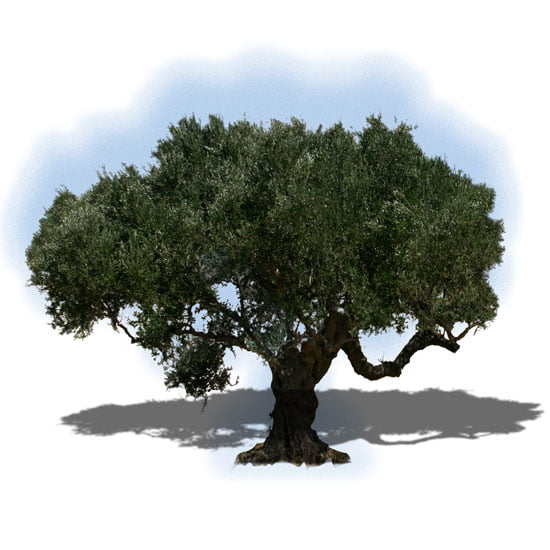
Olive
It is an evergreen tree, it has opposite, lanceolate, leathery leaves, dark green on the upper surface and silvery on the lower. Its flowers are whitish, single-petalled and very small, form a botryos inflorescence and appear towards the end of May, while the fruit ripens and is collected in late autumn and early winter.
The olive was the symbol of the goddess Athena. The olive has been known since ancient times, and probably originates from the area of the eastern Mediterranean. According to ancient Greek tradition, the birthplace of the olive tree is Athens, and the first olive tree was planted by Athena on the Acropolis.
The Greeks were the first people to cultivate the olive tree in the European Mediterranean area. It was carried either by Greek colonists or Phoenician traders. As Pliny mentions, in 580 BC, neither Latium, nor Spain, nor Tunis knew the olive and its cultivation.
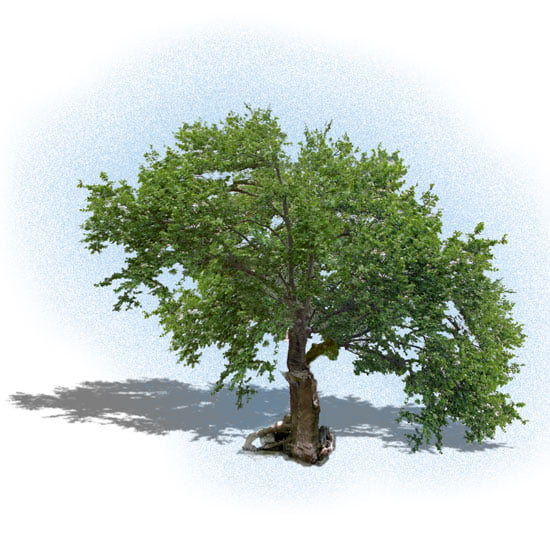
Platanus
These are large trees, with a height ranging from 30 to 50 meters, deciduous (except for the P. kerrii species) and are found on river banks and generally in wetlands and places where there is water, but they can also survive in drought . The hybrid London sycamore species adapts without problems to an urban environment, as do most species in general.
In Greece, the sycamore is also linked to many traditions while large long-lived sycamores have been famously preserved through the ages. An example is the plane tree of Hippocrates in Kos, where, by collecting its leaves together with garlic, quince, grape and pomegranate, a concoction called archichronia is created, a custom held every September 1, the beginning of the church year.
According to Greek mythology, Zeus and Hera were married under a plane tree near Knossos.
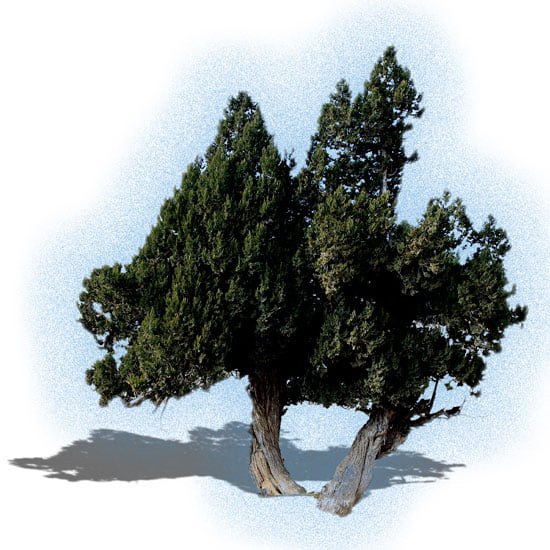
Cedar
The cedar (Cedrus) is a coniferous evergreen tree that belongs to the Pine family (Pinaceae).
The cedar is characterized by the large size of its trunk. Its leaves are needle-like and rigid, while each of them has two resin-bearing ducts. A cedar leaf stays on the tree for 3 to 6 years. Female cedar cones are green or purple in color. Cedars are often found in fir forests because cedars initially provide the shade that firs require to grow during the early stages of their life. The wood of a cedar when burned gives off an aroma, and that is why it is also characterized as an aromatic tree. Cedar does not need a lot of water to grow, nor does it have special soil requirements.
